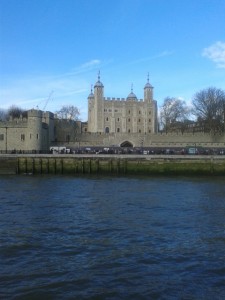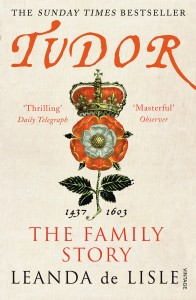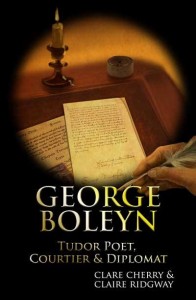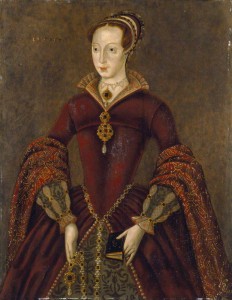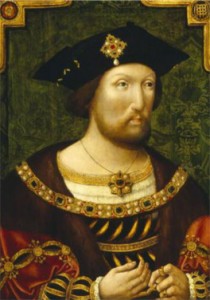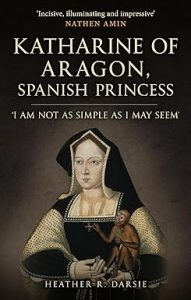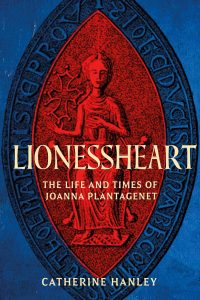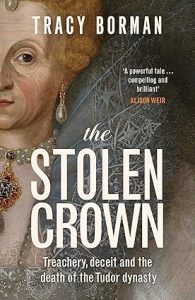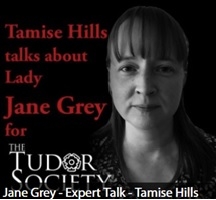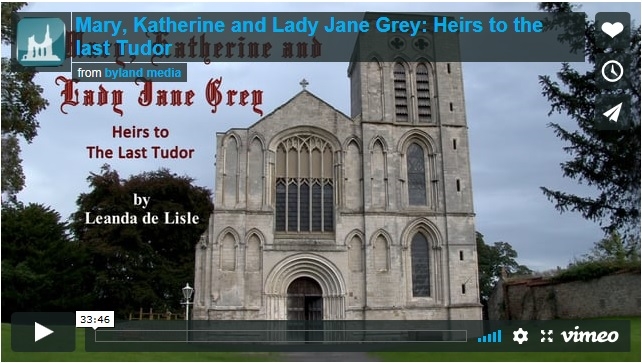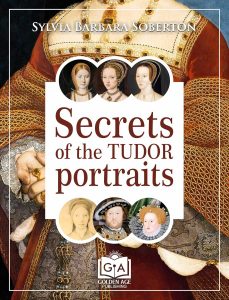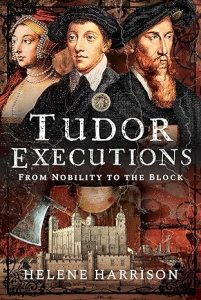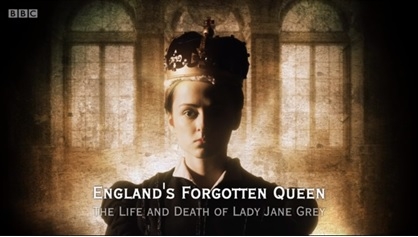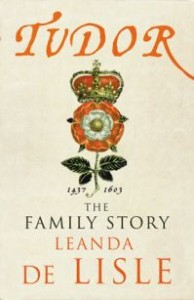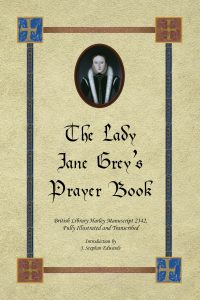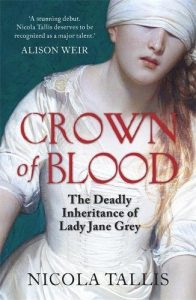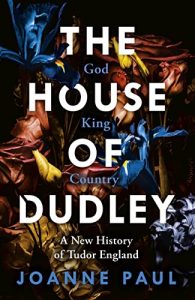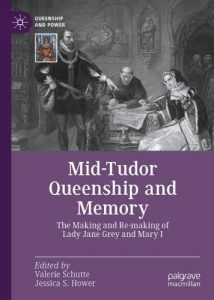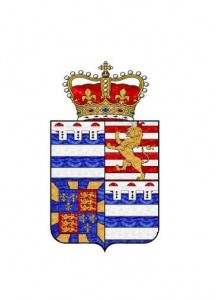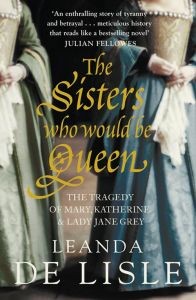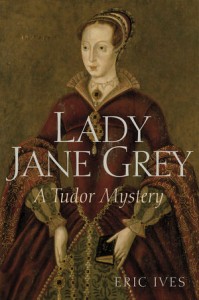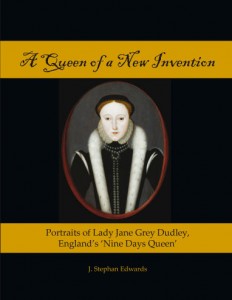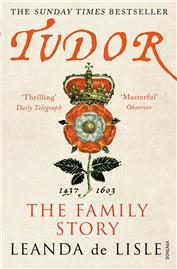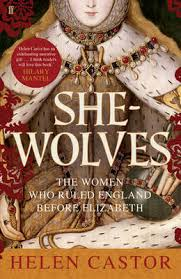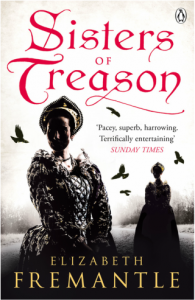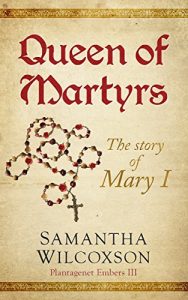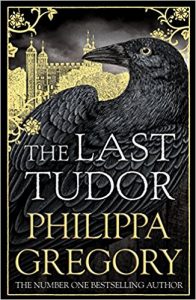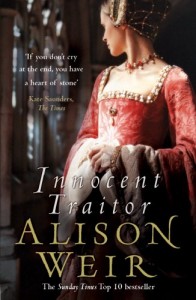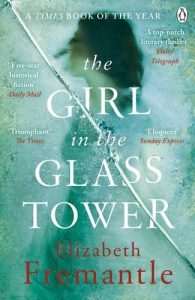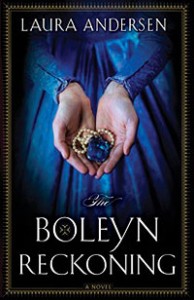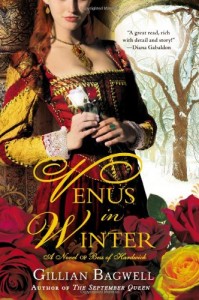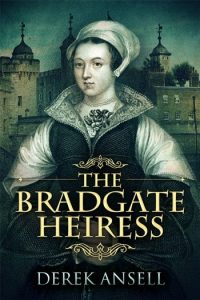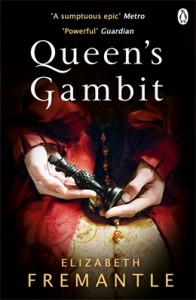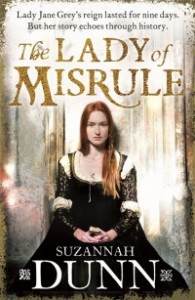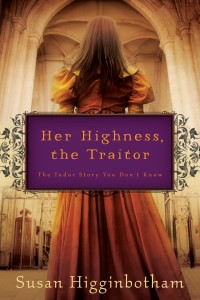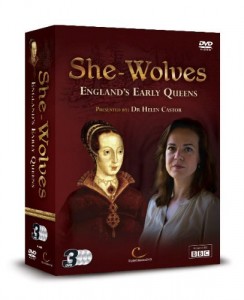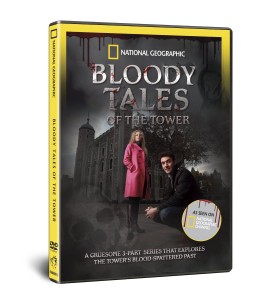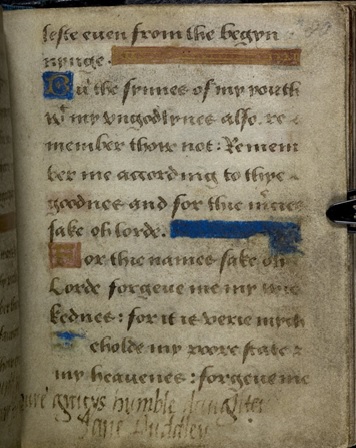Today is the 461st anniversary of Queen Jane’s arrival at the Tower of London.
In November last year, Dr Stephan Edwards announced on his website, Some Grey Matter, his discovery of two letters that mention Jane. Edwards writes that, ‘To my knowledge, neither of these letters has ever been published in English, and no historian writing on the subject of Jane Grey or the succession dispute of 1553 has ever cited them. They are presented here for what I believe is the first time in the modern era.’ (1)
The letters appear in the third volume of ‘Lettere di Principi’ a series of ‘a collection of letters to, from, or about a wide variety of early-sixteenth-century European rulers, noblemen, and princes of the Roman Catholic Church’ (2), which was published, in 1577 by Giordano Ziletti.
According to Edwards, the author and recipient of the letters are unknown but he thinks that they were written by a member of the Venetian diplomatic embassy. It is not clear if the author actually witnessed the events of the 10th of July or if he received the details from an eye witness.
I thought that today would be a good time to look at what, if anything these new letters add to our knowledge of Jane’s arrival at the Tower.
I have used sources that are available to me, so if I have missed any, please let me know.
This is the translation of a section of the first letter, dated or written on 24th July 1553.
‘Came this Lady Jane on the 10th of July from Syon to the Tower of London by water, accompanied by great Lords, men and women. Entering into the Tower with the men ahead, the ladies proceeded. The most near to her among the Lords was Northumberland, and among the ladies the mother, who as greatest in precedence held the train of the gown. Now you say to me that this seems to you a monstrosity. To see a child Queen, [who] by certain reason came from the mother, father and mother living, and neither [one of them] King nor Queen. To speak with her and to serve her on bended knee. Not only all the others, but the father and the mother! To have a good husband without gifts other than beauty, his father living, and fourth born. The husband stood with hat in hand, not only in front of the Queen, but in front of father and mother, all the other Lords making a show of themselves putting the knee on the ground.’ (3)
This letter tells us the following about 10 July:
• Jane arrived by water from Syon to take possession of the Tower of London
• Jane’s mother, Frances, Duchess of Suffolk, carried the train of her gown in the procession.
• Jane’s parents were amongst those who were deferential in their behaviour towards her.
• Guildford Dudley’s behaviour is mentioned in detail.
It has been over four years since Leanda de Lisle announced that the famous description of Jane arriving at the Tower of London by Baptisa Spinola was a fake, created by Richard Davey. Stephan Edwards has also conducted his own research into the Baptisa letter and concurs with de Lisle. (4)
However, there are other contemporary accounts of Jane’s arrival at the Tower. These were by the Spanish Ambassadors, in an anonymous report included in the Calendar of State Papers, Spain, Volume 11: 1553’, the writers of ‘The Chronicle of Queen Jane and of Two Years of Queen Mary’, the ‘Chronicle of the Grey Friars’ and the ‘Wriothesley’ Chronicle, as well as the diarist Henry Machyn and Jane herself.
All of these accounts (apart from those by the Spanish Ambassadors, who do not mention how Jane arrived at the Tower) agree that Jane and her party arrived at the Tower of London by water, although there are differences in the starting point of her journey. This new letter has her arriving from Syon, which is also implied by the report of 20th July, ‘Advices from England’ (the unknown author of which, wrote that, ‘I was yesterday at the (Imperial) ambassadors’) (5)
‘On Saturday the Duke—and when I say “Duke” you are to understand “Northumberland”—went to Sion House, whither all the other members of the Council repaired on Sunday to a great banquet attended by the two Duchesses and the Lady Jane, daughter of the Duke of Suffolk, who was afterwards proclaimed Queen. The Council fixed upon their plan of action, and on Monday, at two o’clock in the afternoon, there came in the royal barges the Duke of Suffolk; my Lord Guilford, son of the Duke and husband of the Lady Jane; the Lady Jane herself, the two Duchesses and other ladies attended by a great following, and landed at the Tower…’ (6)
Jane, in the letter she wrote to Mary in August 1553, states that she was at Syon on 9th July and ‘… as everybody knows, the following day I was brought to the Tower.’ (7) Jane does not mention going anywhere else before the Tower but this level of detail could have been considered insignificant by Jane in what, Ives calls ‘the one written appeal… that would have been allowed .’ (8)
The author of the ‘Chronicle of the Grey Friars’ however, writes that Jane ‘was browte that same afternone from Richemond un-to Westmyster, and soo unto the tower of London by watter.’ (9) The ‘Wriothesley’ chronicle has Jane being ‘brought by water from Grenewich to the Tower of London.’ (10)
The new letter also mentions that Frances, Duchess of Suffolk carried her daughter’s train in procession to the Tower.
‘The most near to her among the Lords was Northumberland, and among the ladies the mother, who as greatest in precedence held the train of the gown.’ (11)
This was noted in other accounts but is not mentioned by the Grey Friars Chronicle or in ‘The Chronicle of Queen Jane and of Two Years of Queen Mary.’ The Spanish Ambassadors wrote to Emperor Charles V on 10th July that,
At about four o’clock this afternoon the ceremony of the state entry was performed at the Tower of London with the accustomed pomp. The new Queen’s train was carried by her mother, the Duchess of Suffolk; and there were not many people present to witness the act.’ (12)
In the previously mentioned anonymous despatch (dated 20th July), it was written that,
‘…on Monday, at two o’clock in the afternoon, there came in the royal barges the Duke of Suffolk; my Lord Guilford, son of the Duke and husband of the Lady Jane; the Lady Jane herself, the two Duchesses and other ladies attended by a great following, and landed at the Tower where the Duke and the other Councillors were waiting to bid the Lady Jane, whose train was carried by her mother, welcome to the Tower.’ (13)
The London merchant taylor, Henry Machyn noted in his diary that,
‘The x day of July was reseyvyd in to the Towre [the Queen Jane] with a grett compeny of lords and nobulls of . . . . . after the qwen, and the duches of Suffoke her mother, bering her trayn, with mony lades…’ (14)
As Leanda de Lisle writes in ‘The Sisters Who Would Be Queen,’ this was ‘a striking visual reminder of how the correct order of things had been overthrown.’ (15) The writer of the letter also comments on this and the level of deferential treatment displayed to Jane by her own father and mother.
‘Now you say to me that this seems to you a monstrosity. To see a child Queen, [who] by certain reason came from the mother, father and mother living, and neither [one of them] King nor Queen. To speak with her and to serve her on bended knee. Not only all the others, but the father and the mother!’ (16)
Other sources only imply this level of treatment with the Spanish Ambassadors reporting that ‘the ceremony of the state entry was performed at the Tower of London with the accustomed pomp’ (17) and Francisco de Vargas wrote to Prince Philip that Northumberland made Jane, ‘take possession of the Tower and go through the usual ceremonies’ (18). The ‘Wriothesley’ Chronicle, the Spanish Ambassadors writing to Prince Philip, and the ‘Chronicle of Queen Jane etc’ all state that Jane was received as Queen. (19)
Jane herself had described in her letter to Mary how ‘all the Lords of the Council’ (20) had knelt to her as Queen at Syon House on 9th July but does not go into detail about her arrival at the Tower the following day.
The new letter also adds to our knowledge of Guildford Dudley’s behaviour on 10th July. Out of the other contemporary sources, only the anonymous report ‘Advices from England’ mentions Guildford’s presence, ‘my Lord Guildford, son of the Duke and husband of the Lady Jane.’ (21) The ‘Wriothseley Chronicle’ identifies Jane in terms of being ‘wyfe to the Lord Gilford Dudley’ (22) but does not comment on his presence. The ‘Diary of Henry Machyn’ only described ‘a grett company of lords and nobulls…with mony lades.’ (23)
The writer of the letter tells us that, ‘The husband stood with hat in hand, not only in front of the Queen, but in front of her father and mother, all the other Lords making a show of themselves putting the knee in the ground.’ (24) Guildford’s appearance is also commented on, with the implication that he was handsome, as he is described as ‘without gifts other than beauty.’ (25)
Edwards’ newly discovered letter (dated or written on 24th July 1553) gives us another view of Queen Jane’s arrival at the Tower of London on 10th July 1553. It supports the details given in anonymous report from 20th July, which implies that Jane came from Syon to the Tower (although both writers might not have been in a position to know the exact journey taken by the new Queen). This letter also reinforces three other accounts that state that the train of Jane’s gown was carried by her own mother. The writer emphasises how this went against what de Lisle calls ‘the correct order of things’ (26) and adds a detailed account of the Duke and Duchess of Suffolk’s deferential behaviour towards their daughter. The letter also gives us new details of Guildford Dudley as he arrived at the Tower with his wife and adds an opinion to our knowledge of his physical appearance.
Sources
1. Edwards, S.< a href= http://www.somegreymatter.com/lettereintro.htm>Some Grey Matter – Lettere di Principi, le quali si scrivono o da principi, o ragionano di principi. Libro Terzo – An Introduction to this Source Date accessed: 5 July 2014
2. Ibid
3. Edwards, S. Some Grey Matter – Two Letters Concerning Lady Jane Grey of England, written in London in July 0f 1553 Date accessed: 5th July 2014
4. Edwards, S. Some Grey Matter – The Spinola Letter Date accessed: 5th July 2014
5. ‘Spain: July 1553, 16-20’, Calendar of State Papers, Spain, Volume 11: 1553 (1916), pp. 90-109. URL: http://www.british-history.ac.uk/report.aspx?compid=88485 Date accessed: 05 July 2014
6. Ibid
7. Malfatti, C.V (translator) (1956), The Accession Coronation and Marriage of Mary Tudor as related in four manuscripts of the Escorial, Barcelona, p.48.
8. Ives, E. (2009) Lady Jane Grey: A Tudor Mystery, Wiley-Blackwell, p.19
9. ‘The Chronicle of the Grey Friars: Jane’, Chronicle of the Grey Friars of London: Camden Society old series, volume 53 (1852), pp. 78-80. URL: http://www.british-history.ac.uk/report.aspx?compid=51589 Date accessed: 05 July 2014.
10. Wriothesley, C. (1877), A Chronicle of England During the Reigns of the Tudors, Vol II, p.85. URL:http://archive.org/stream/chronicleofengla02camduoft/chronicleofengla02camduoft_djvu.txt Date accessed: 08 July 2014
11. Edwards, S. Some Grey Matter – Two Letters Concerning Lady Jane Grey of England, written in London in July 0f 1553 Date accessed: 5th July 2014
12. ‘Spain: July 1553, 1-10’, Calendar of State Papers, Spain, Volume 11: 1553 (1916), pp. 69-80. URL: http://www.british-history.ac.uk/report.aspx?compid=88483 Date accessed: 08 July 2014
13. ‘Spain: July 1553, 16-20’, Calendar of State Papers, Spain, Volume 11: 1553 (1916), pp. 90-109. URL: http://www.british-history.ac.uk/report.aspx?compid=88485 Date accessed: 05 July 2014
14. ‘Diary: 1553 (Jul – Dec)’, The Diary of Henry Machyn: Citizen and Merchant-Taylor of London (1550-1563) (1848), pp. 34-50. URL: http://www.british-history.ac.uk/report.aspx?compid=45512 Date accessed: 08 July 2014
15. De Lisle, L. (2010) The Sisters Who Would Be Queen: The Tragedy of Mary, Katherine and Lady Jane Grey, HarperPress, p.113.
16. Edwards, S. Some Grey Matter – Two Letters Concerning Lady Jane Grey of England, written in London in July 0f 1553 Date accessed: 5th July 2014
17. ‘Spain: July 1553, 1-10’, Calendar of State Papers, Spain, Volume 11: 1553 (1916), pp. 69-80. URL: http://www.british-history.ac.uk/report.aspx?compid=88483 Date accessed: 08 July 2014
18. ‘Spain: July 1553, 21-31’, Calendar of State Papers, Spain, Volume 11: 1553 (1916), pp. 109-127. URL: http://www.british-history.ac.uk/report.aspx?compid=88486 Date accessed: 10 July 2014
19. Wriothesley, C. (1877), A Chronicle of England During the Reigns of the Tudors, Vol II, p.85. URL:http://archive.org/stream/chronicleofengla02camduoft/chronicleofengla02camduoft_djvu.txt Date accessed: 08 July 2014
‘Spain: July 1553, 16-20’, Calendar of State Papers, Spain, Volume 11: 1553 (1916), pp. 90-109. URL: http://www.british-history.ac.uk/report.aspx?compid=88485 Date accessed: 05 July 2014
Nichols, J. G (ed) (1850) The Chronicle of Queen Jane and of Two Years of Queen Mary and Especially of the Rebellion of Sir Thomas Wyatt, Written by a Resident in the Tower of London, Llanerch Publishers, p.3.
20. Malfatti, C.V (translator) (1956), The Accession Coronation and Marriage of Mary Tudor as related in four manuscripts of the Escorial, Barcelona, p.46.
21. ‘Spain: July 1553, 16-20’, Calendar of State Papers, Spain, Volume 11: 1553 (1916), pp. 90-109. URL: http://www.british-history.ac.uk/report.aspx?compid=88485 Date accessed: 05 July 2014
22. Wriothesley, C. (1877), A Chronicle of England During the Reigns of the Tudors, Vol II, p.85. URL:http://archive.org/stream/chronicleofengla02camduoft/chronicleofengla02camduoft_djvu.txt Date accessed: 08 July 2014
23. ‘Diary: 1553 (Jul – Dec)’, The Diary of Henry Machyn: Citizen and Merchant-Taylor of London (1550-1563) (1848), pp. 34-50. URL: http://www.british-history.ac.uk/report.aspx?compid=45512 Date accessed: 08 July 2014
24. Edwards, S. Some Grey Matter – Two Letters Concerning Lady Jane Grey of England, written in London in July 0f 1553 Date accessed: 5th July 2014
25. Ibid.
26. De Lisle, L. (2010) The Sisters Who Would Be Queen: The Tragedy of Mary, Katherine and Lady Jane Grey, HarperPress, p.113.

